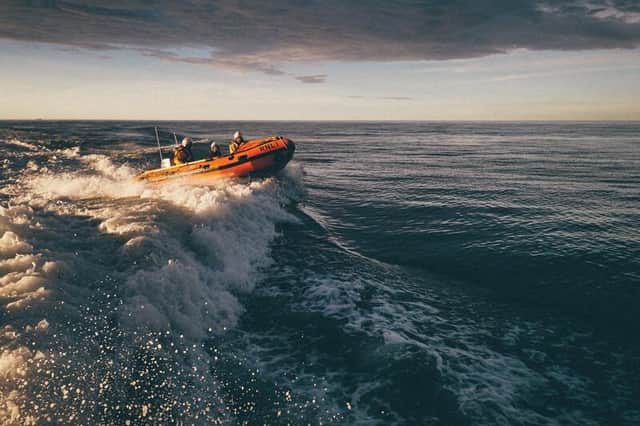Swimmer rescued in cold water at Scarborough as RNLI reshare important advice to all cold water swimmers


The volunteer crew was paged at 08:05am on Monday, January 8, and swiftly assembled to launch the charity’s inshore D class lifeboat John Wesley Hillard IV to reports of a person in water in difficulty.
As the Scarborough RNLI lifeboat crew arrived on scene, they found that the swimmer was struggling to keep their head above water and that they were extremely cold.
Advertisement
Hide AdAdvertisement
Hide AdThey quickly brought them onboard the inshore lifeboat and started casualty care as the inshore lifeboat made its way back to the boat house.
The casualty was brought to the boat house and was handed over to the ambulance service and HM Coastguard.
Scarborough RNLI inshore lifeboat helm said: “We made best speed in the charity’s D class lifeboat to the area, knowing that there was a person in the water needing our assistance.
"As we arrived on scene, we found the casualty extremely cold and really struggling, so our assistance needed to be quick.
Advertisement
Hide AdAdvertisement
Hide Ad"Luckily, their friends swimming with them carried a means of calling for help and called for assistance when they did as the outcome could have been quite different.”
James Buck, Scarborough RNLI Water Safety Officer, said: “Cold water swimming in Scarborough is becoming extremely popular and here are a few things to keep you safe:
- · Always take a means of calling for help like a mobile phone in a waterproof pouch. You must be able to reach it in an emergency.
- · Acclimatise to cold water slowly, entering the water gradually to reduce the risk of cold-water shock. Always swim parallel to the shore and not straight out. Cold water and currents can tire you quickly and make it harder to return to shore.
- · Always consider using a tow float and wear a brightly coloured swim hat. This will increase your visibility in the water.
- · If you find yourself in danger in the water, float to live.
- · Don’t forget to check the tide times before you start your activity.
- · Dial 999 or 112 and ask for the Coastguard if you get into difficulty around the coast.’
Further advice about open water swimming is available here: https://rnli.org/safety/choose-your-activity/open-water-swimming
Find out more at RNLI.org/safety.